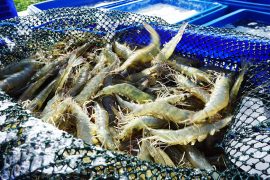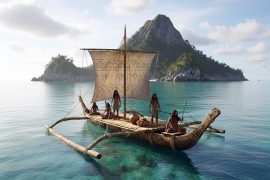
Orcas have hunting and eating habits that we never imagined
Near the curve of Chile’s shoreline, in regions of the ocean teeming with krill and anchovy, lies a world inhabited by a relatively obscure population of orcas.
Here, right under the Humboldt Current’s life-giving hum, scientists are unraveling the mysteries of these magnificent beasts, starting with their gastronomic indulgences.
Orcas hunting dolphins
Dr. Ana Garcia Cegarra’s team from Universidad de Antofagasta had previously observed these orcas ingeniously exploiting fishing vessels to ensnare sea lions. The researchers have now recorded them successfully hunting dusky dolphins.
What’s more, the food is shared among the pod – a testament to their social camaraderie. These fresh revelations could give us valuable insight into the relation between different orca populations in the southern hemisphere.
“Studying orcas in their natural environment is very challenging as they are marine top predators, traveling long distances and living offshore, which makes observation difficult,” said Cegarra.
“But understanding their role in the marine environment is crucial for the conservation of this poorly-known species in the Humboldt Current.”
Dietary habits of orcas
Orcas, often regarded as apex predators, boast an incredibly varied diet. However, not all orca populations share the same culinary preferences. They can be segmented into different ecotypes depending upon their food choices, acoustics, and genetics.
Hence, comprehending the dietary habits of the orcas in the Humboldt Current is a crucial step toward understanding their niche within the global orca community.
Five diverse ecotypes have been identified in the southern hemisphere. While some, like Type A and Type B1 orcas, are partial towards marine mammals, others favor fish.
Figuring out where the Humboldt Current orcas fit in this intricate food web is key to understanding the broader relations between these populations and, in turn, preserving them for the future.
Hunting patterns of orcas
In order to monitor the population and track their food choices, Dr. Garcia Cegarra and her associates utilized their own surveys as well as data collected from whale-watching trips and fishing vessels.
Orcas sightings were documented, and group compositions and locations were recorded. Pictures and video footage captured on the scene were later cross-checked with catalogues of known individuals.
This data, in combination with regular surveys and drone footage, allowed the scientists to map the presence of orcas in the area and track the pods’ behavioral patterns and prey preferences.
Menacho pod of orcas
The researchers managed to record the Menacho pod of orcas hunting dusky dolphins – a feat previously unreported for orcas in the region. The images are nothing short of dramatic. They show Dakota, the matriarch, flinging a dusky dolphin into the air.
These sightings hint at the possibility of the orcas belonging to the mammal-hunting Type A ecotype. Their choice of prey and comparatively smaller pod size align well with this hypothesis, although their white eye patches are smaller than the typical Type A orcas.
Furthermore, these orcas have never been spotted in Patagonia, the typical haunt of Type A orcas.
Orcas on a dolphin hunt
Of course, all these findings only highlight the need for more research. Dr. Garcia Cegarra said that while the team wishes they could retrieve skin biopsy samples to conduct genetic analysis, the fact that these orcas are elusive and highly intelligent makes it difficult to approach them for biopsies.
What’s more, the observations of the dolphin hunt revealed the Menacho pod sharing their spoils – a display of food sharing common among many orca populations.
The Menacho orcas likely feed their kin, similar to Type A orcas who hunt sea lions through deliberate stranding. Female orcas have been observed sharing meat with group members, allowing closer relations to eat first.
Future research directions
Dr. Garcia Cegarra emphasized the need for more systematic study to fully understand and protect this secretive orca population.
“We have observed newborn calves, which indicates that they are having offspring, but their survival rate remains unknown,” she noted.
Citizen scientists have monitored killer whales along thousands of kilometers of the Chilean coastline, but these sightings are largely opportunistic.
The study is published in the journal Frontiers in Marine Science.
—–
Like what you read? Subscribe to our newsletter for engaging articles, exclusive content, and the latest updates.
Check us out on EarthSnap, a free app brought to you by Eric Ralls and Earth.com.
—–













